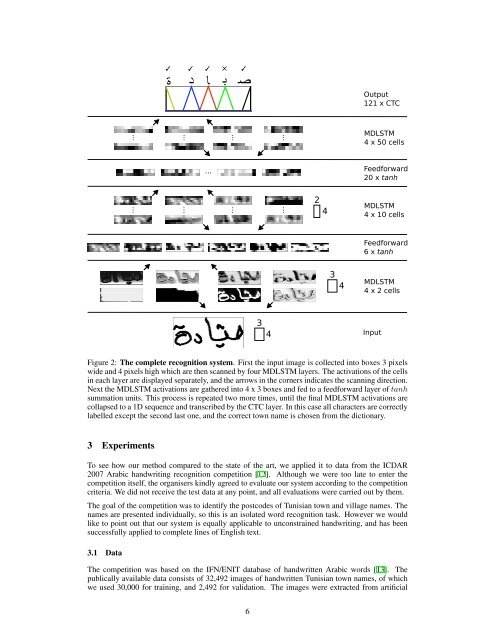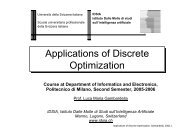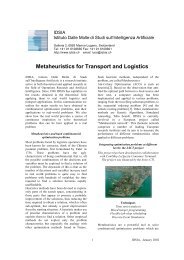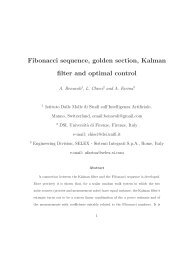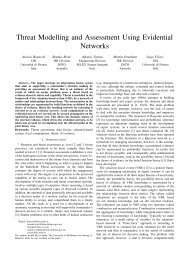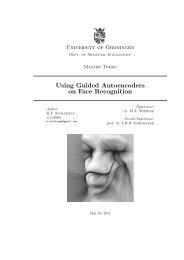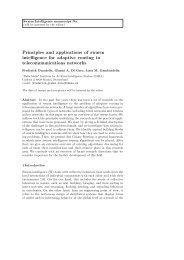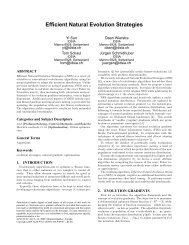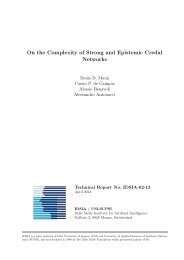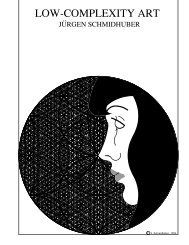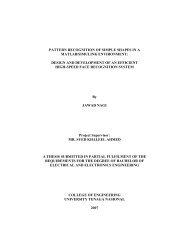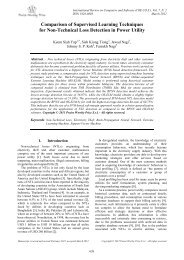Offline Handwriting Recognition with Multidimensional ... - Idsia
Offline Handwriting Recognition with Multidimensional ... - Idsia
Offline Handwriting Recognition with Multidimensional ... - Idsia
Create successful ePaper yourself
Turn your PDF publications into a flip-book with our unique Google optimized e-Paper software.
Figure 2: The complete recognition system. First the input image is collected into boxes 3 pixels<br />
wide and 4 pixels high which are then scanned by four MDLSTM layers. The activations of the cells<br />
in each layer are displayed separately, and the arrows in the corners indicates the scanning direction.<br />
Next the MDLSTM activations are gathered into 4 x 3 boxes and fed to a feedforward layer of tanh<br />
summation units. This process is repeated two more times, until the final MDLSTM activations are<br />
collapsed to a 1D sequence and transcribed by the CTC layer. In this case all characters are correctly<br />
labelled except the second last one, and the correct town name is chosen from the dictionary.<br />
3 Experiments<br />
To see how our method compared to the state of the art, we applied it to data from the ICDAR<br />
2007 Arabic handwriting recognition competition [12]. Although we were too late to enter the<br />
competition itself, the organisers kindly agreed to evaluate our system according to the competition<br />
criteria. We did not receive the test data at any point, and all evaluations were carried out by them.<br />
The goal of the competition was to identify the postcodes of Tunisian town and village names. The<br />
names are presented individually, so this is an isolated word recognition task. However we would<br />
like to point out that our system is equally applicable to unconstrained handwriting, and has been<br />
successfully applied to complete lines of English text.<br />
3.1 Data<br />
The competition was based on the IFN/ENIT database of handwritten Arabic words [13]. The<br />
publically available data consists of 32,492 images of handwritten Tunisian town names, of which<br />
we used 30,000 for training, and 2,492 for validation. The images were extracted from artificial<br />
6


